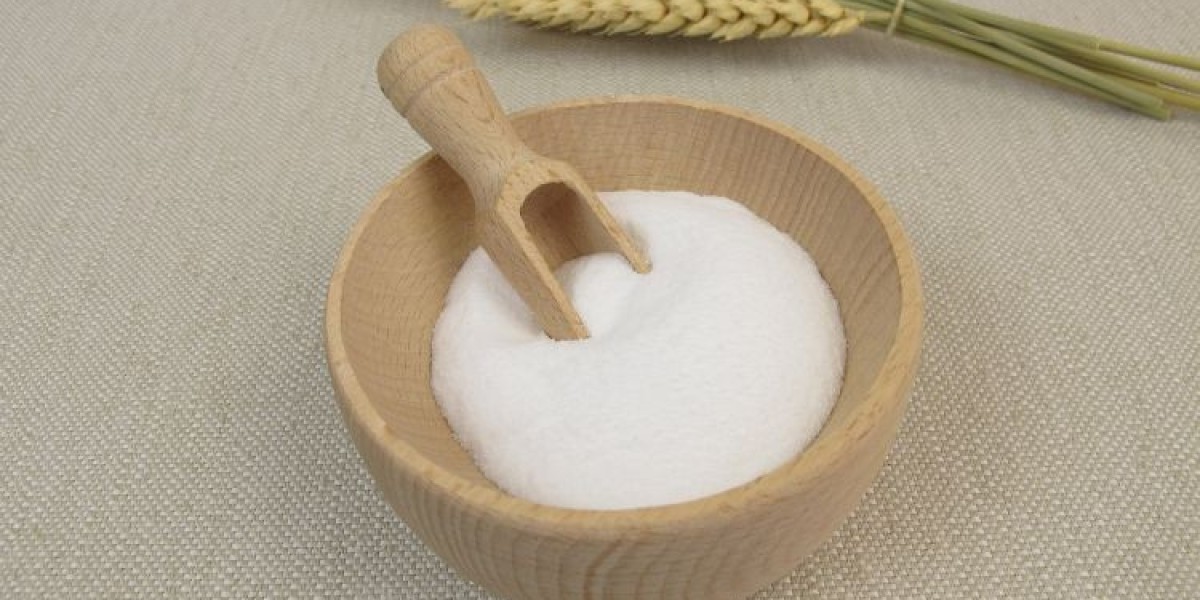The global wheat starch market size stood at a volume of 6.52 million tons in 2023. The rising demand for the product is being driven by the growing global population. The industry is expected to grow further in the forecast period of 2024-2032 at a CAGR of 1.1% to reach 7.19 million tons by 2032. The growing health consciousness among consumers, leading to an increasing demand for low-calorie sweeteners and gluten-free food, is aiding the growth of the global wheat starch market.
Market Size and Share (2024-2032)
The wheat starch market is poised for steady growth, reflecting broader trends in the food and industrial sectors. As consumer preferences shift towards healthier food options and sustainable materials, wheat starch, a versatile ingredient, finds increased applications. The market is segmented by typenative starch and modified starchand by end use, including sweeteners, fuel, paper and textiles, food, and other industries.
By Type
Native Starch
Native wheat starch, known for its thickening and gelling properties, is widely used in the food industry. It serves as a vital ingredient in baking, confectionery, and processed foods, providing desirable textures and stability. The demand for native starch is bolstered by its natural origin, aligning with the growing consumer preference for clean-label products.
Modified Starch
Modified wheat starch, engineered to enhance certain properties, finds extensive applications in industrial and food sectors. Its improved stability and performance under various conditions make it ideal for use in adhesives, coatings, and processed foods. The modified starch segment is expected to witness robust growth as industries seek more efficient and versatile raw materials.
By End Use
Sweeteners
Wheat starch plays a crucial role in the production of sweeteners, including glucose and maltose syrups. The increasing demand for low-calorie sweeteners, driven by health-conscious consumers, is a significant growth driver for this segment. As sugar reduction becomes a focal point in food and beverage formulations, the role of wheat starch in sweetener production is set to expand.
Fuel
The biofuel industry utilizes wheat starch in the production of ethanol, a renewable energy source. As global efforts to reduce carbon emissions intensify, the demand for biofuels is on the rise. Wheat starch, being a renewable and biodegradable feedstock, is well-positioned to support the growing biofuel market.
Paper and Textiles
In the paper and textile industries, wheat starch is used for its binding and sizing properties. It enhances the strength and quality of paper products and improves the texture and durability of textiles. The segment's growth is linked to the increasing demand for sustainable and eco-friendly materials in these industries.
Food
The food industry remains the largest consumer of wheat starch, leveraging its functional properties in various applications. From thickeners in soups and sauces to stabilizers in dairy products, wheat starch's versatility makes it indispensable. The trend towards gluten-free and low-calorie products further propels the demand in this segment.
Others
Wheat starch also finds applications in the pharmaceutical, cosmetics, and packaging industries. Its role in biodegradable packaging materials is gaining attention as sustainability becomes a key focus across sectors.
Regional Analysis
North America
The North American wheat starch market is driven by the high demand for processed foods and biofuels. Technological advancements in starch modification and a strong focus on sustainable practices contribute to the market's growth in this region.
Europe
Europe's market benefits from stringent regulations promoting the use of bio-based products. The region's robust food processing industry and increasing preference for gluten-free foods further drive the demand for wheat starch.
Asia Pacific
The Asia Pacific region, led by China and India, is witnessing rapid growth due to rising disposable incomes and expanding food and beverage industries. The increasing adoption of biofuels and sustainable packaging solutions also supports market expansion.
Latin America
Latin America's market growth is fueled by the region's agricultural strength and the rising demand for processed foods. The biofuel sector also contributes significantly to the demand for wheat starch.
Middle East and Africa
In the Middle East and Africa, the market is driven by the growing food industry and increasing industrial applications of wheat starch. The region's focus on sustainable development and renewable energy further supports market growth.
Market Dynamics
SWOT Analysis
- Strengths: Versatility, renewable source, wide range of applications.
- Weaknesses: Competition from other starches, dependency on wheat supply.
- Opportunities: Growth in biofuel and biodegradable packaging sectors.
- Threats: Fluctuations in wheat prices, stringent regulations.
Porters Five Forces Analysis
- Threat of New Entrants: Moderate, due to the need for technological expertise.
- Bargaining Power of Suppliers: High, as wheat supply impacts production.
- Bargaining Power of Buyers: Moderate, with multiple starch options available.
- Threat of Substitute Products: High, with alternatives like corn starch.
- Industry Rivalry: Intense, with key players competing on innovation and quality.
Key Indicators for Demand
- Rising health consciousness
- Increased use in biofuels
- Growth in processed food consumption
Key Indicators for Price
- Wheat supply and prices
- Production costs
- Market demand dynamics
Competitive Landscape
The competitive landscape of the wheat starch market features several key players striving for market share. Major companies include Archer Daniels Midland Company, Cargill Incorporated, and Tereos Group. These companies focus on product innovation, strategic partnerships, and expanding production capacities to maintain their competitive edge.
ALSO READ OUR OTHER REPORTS:-
Laptop Market Share
Coffee Market
Korean Honey
Shrimp Farming In India
Coffee Industry Worth
Automated Material Handling Market
Hose Market








